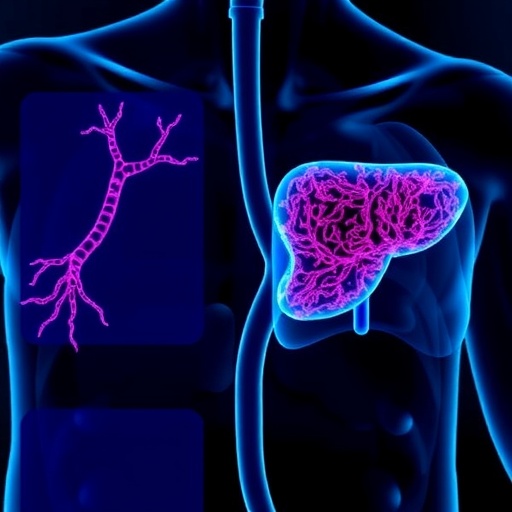Young women with high body fat have a decreased chance of developing breast cancer before menopause, according to scientists at the National Institutes of Health and their collaborators. The finding, published online in the journal JAMA Oncology, may help researchers better understand the role obesity plays in breast cancer risk.
"It is well known that women who gain weight, particularly after menopause, carry an increased risk of postmenopausal breast cancer," said Dale Sandler, Ph.D., co-senior author and head of the Epidemiology Branch at the National Institute of Environmental Health Sciences (NIEHS), part of NIH. "Our finding that breast cancer risk is not increased in obese premenopausal women, and in fact decreases, points to the possibility that different biologic mechanisms are responsible for causing breast cancer in younger women."
Sandler said since the development of breast cancer is relatively rare before menopause, researchers previously found it difficult to fully evaluate risk factors in a single study. She added that previous studies suggested risk factors for breast cancer in younger women may not be the same as in older women.
To understand breast cancer risk in women who have not gone through menopause, Sandler and other researchers formed the Premenopausal Breast Cancer Collaborative Group. The international team pooled data from 19 different studies, comprising 758,592 women from around the world. The approach allowed the team to identify risk factors and patterns that would be difficult to detect with a smaller number of women.
The participants in the collaborative group studies ranged in age from 18 to 54 at the beginning of study follow up. Volunteers for each individual study filled out several rounds of questionnaires, which included height, weight, and other health-related factors. With this information, researchers evaluated the risk of developing breast cancer in relation to body mass index (BMI) in the following age ranges: 18-24, 25-34, 35-44, and 45-54. BMI is a way to measure the amount of body fat. Overall, 13,082 participants, or 1.7 percent, developed breast cancer during the observed time periods.
The scientists determined that relative risk of premenopausal breast cancer was reduced 12-23 percent for each five-unit increase in BMI, depending on age. The strongest effect was seen in relation to BMI at ages 18-24, with very obese women in this age group being 4.2 times less likely to develop premenopausal breast cancer compared to women with low BMI at the same age.
While Sandler and her colleagues are unsure why young, premenopausal women with a high BMI appear to be protected against breast cancer, she cautions that young women should not intentionally gain weight to lower their breast cancer risk.
"There are so many health risks associated with being overweight or obese," Sandler said. "We still believe it is important for women to maintain a healthy weight throughout life."
A study this size requires many people working together. In addition to Sandler, Anthony Swerdlow, D.M., D.Sc., Ph.D., and Minouk Schoemaker, Ph.D., of the Institute of Cancer Research, London, and Hazel Nichols, Ph.D., of the University of North Carolina at Chapel Hill led the development of the Premenopausal Breast Cancer Collaborative Group. Schoemaker and Nichols were co-first authors of the paper.
NIEHS staff scientist Katie O'Brien, Ph.D., is an author on the study and works in Sandler's group. O'Brien said the work is a great example of how scientists can pool their resources to tackle important research questions in greater detail.
"We hope this is the first of many studies to specifically focus on risk factors for breast cancer among young women," she said.
###
About the National Institute of Environmental Health Sciences (NIEHS): NIEHS supports research to understand the effects of the environment on human health and is part of the National Institutes of Health. For more information on NIEHS or environmental health topics, visit http://www.niehs.nih.gov or subscribe to a news list.
About the National Institutes of Health (NIH): NIH, the nation's medical research agency, includes 27 Institutes and Centers and is a component of the U.S. Department of Health and Human Services. NIH is the primary federal agency conducting and supporting basic, clinical, and translational medical research, and is investigating the causes, treatments, and cures for both common and rare diseases. For more information about NIH and its programs, visit http://www.nih.gov.
Grant Numbers: ZIAES044005, P30ES000260, KL2TR001109, UM1CA176726, UM1CA186107, UM1CA182876, UM1CA182934, UM1CA164974, UM1CA182876, R01CA058420, R01CA092447, R01CA077398, R01CA144034, R01CA144032
Reference: Schoemaker MJ, Nichols HB, Wright LB, Brook MN, Jones ME, O'Brien KM, Adami H-O, Balietto L, Bernstein L, Bertrand KA, Boutron-Ruault M-C, Braaten T, Chen Y, Connor AE, Dorronsoro M, Dossus L, Eliassen AH, Giles GG, Hankinson SE, Kaaks R, Key TJ, Kirsh VA, Kitahara CM, Koh W-P, Larsson SC, Linet MS, Ma H, Masala G, Merritt MA, Milne RL, Overvad K, Ozasa K, Palmer JR, Peeters PH, Riboli E, Rohan TE, Sadakane A, Sund M, Tamimi RM, Trichopoulou A, Ursin G, Vatten L, Visvanathan K, Weiderpass E, Willett WC, Wolk A, Yuan J-M, Zeleniuch-Jacquotte A, Sandler DP, Swerdlow AJ. 2018. Association of body mass index and age with subsequent breast cancer risk in premenopausal women. JAMA Oncol; doi: 10.1001/jamaoncol.2018.1771 [Online 21 June 2018].
Media Contact
Robin Arnette
[email protected]
919-541-5143
@niehs
http://www.niehs.nih.gov
https://www.niehs.nih.gov/news/newsroom/releases/2018/june27/index.cfm
Related Journal Article
http://dx.doi.org/10.1001/jamaoncol.2018.1771




